Luxury Marketing: Definition, Strategies, Examples, Challenges
Luxury isn’t just a price point.
It’s a feeling.
A statement.
A lifestyle.
That’s what makes luxury marketing a completely different game; one built on storytelling, scarcity, experience, and identity. Whether it’s a handcrafted timepiece or a private island resort, the value goes way beyond function. It’s about desire.
But the rules are shifting.
Luxury consumers are changing. Digital channels have evolved. By 2030, Millennials and Gen Z are expected to drive nearly 75% of global luxury spending, according to Bain & Company. Expectations are higher than ever, and the playbook is constantly evolving.
In this guide to luxury brands and digital marketing, we’re breaking down everything you need to know:
What luxury marketing actually means (and why it’s so different) ✔️
The key principles every luxury brand follows ✔️
Steps to craft your own strategy ✔️
Real-world examples ✔️
Challenges that even top brands face and how to handle them ✔️
What Is Luxury Marketing?
Luxury marketing isn’t about shouting the loudest or offering the biggest discount. In fact, it’s the opposite. It’s built on luxury brand psychology, which is the understanding of what truly drives high-end buyers. That means creating desire through exclusivity, heritage, craftsmanship, and emotion. You’re not just selling a product; you’re selling status, an experience, and a sense of belonging to something rare.
So, what makes luxury marketing different?
You can’t market a luxury product or service in the same way as you would a standard product or service. Here are four key differentiators between the two.
A focus on value over price
The goal isn’t to compete on cost; it’s to elevate the brand above comparison entirely.
Emotion-first messaging
Luxury campaigns tap into feelings like aspiration, pride, or even nostalgia. It’s deeply personal.
Scarcity and prestige
Limited editions, invite-only events, private access… these are part of the appeal, not a barrier.
Long-term brand equity
Unlike fast-moving consumer goods, luxury isn’t about quick wins. It’s about legacy and loyalty.
Where does luxury marketing show up?
It plays a huge role in industries where perception matters just as much as the product:
- Fashion and accessories – Couture lines, high-end bags, and bespoke tailoring
- Watches and jewellery – Craftsmanship, rarity, and generational appeal
- Automotive – Performance meets prestige
- Hospitality – Premium stays, private travel, and ultra-personalised experiences
- Beauty and fragrance – Exclusivity, heritage, and sensory storytelling
Who’s the target audience?
Luxury marketing speaks to a more nuanced customer than just “high net worth.” It’s often about mindset and identity:
- Affluent professionals who value legacy, discretion, and quality
- Status-driven consumers who are motivated by image, success, and belonging
- Collectors and connoisseurs who are loyal to heritage, craftsmanship, and story
- Next-gen buyers – Gen Z and Millennials driven by values, sustainability, and uniqueness
The challenge is getting someone to feel like they belong, not just with the product, but with everything the brand represents.
How Luxury Marketing Differs from Traditional Marketing
Luxury marketing doesn’t play by the same rules as the mass market, and for good reason. Traditional marketing often focuses on reach, volume, and conversion. The goal is to sell more, to more people, as quickly as possible.
Luxury marketing flips that model on its head.
Instead of pushing for volume, luxury brands work hard to limit access. Scarcity drives value. Instead of shouting to the masses, they whisper to a select few, and that quiet exclusivity is part of the appeal.
Digital marketing for luxury brands is less about pushing product and more about curating experience. It’s a slower, more deliberate approach rooted in identity, legacy, and storytelling.
Here’s how the two approaches compare:
| Traditional Marketing | Luxury Marketing |
| Mass appeal and accessibility | Selective targeting and exclusivity |
| Price-driven promotions and discounts | High pricing with no discounting |
| Focus on functionality and features | Focus on emotion, heritage, and experience |
| High-frequency communication | Minimalist, refined messaging |
| Performance-based metrics (clicks, sales) | Brand equity, perception, and loyalty |
| Omni-channel and convenience | Controlled distribution and brand environments |
These differences aren’t just stylistic. They’re strategic. In luxury marketing, everything — from the materials used to the way a product is revealed — becomes part of the brand’s identity.
Luxury buyers aren’t just purchasing something useful. They’re aligning themselves with a lifestyle, a story, and a set of values. That’s why luxury marketing requires such a different mindset — one that prioritises meaning over metrics, and legacy over likes.
Core Principles of Luxury Marketing
Marketing in the luxury space doesn’t work like the rest of the industry, and that’s exactly why it matters. You’re not chasing clicks or rushing to keep up with the latest trends. Every decision needs to protect brand value, not just performance metrics.
The strongest luxury brands don’t just stick to a playbook. They follow a set of deeply embedded principles, ones that shape how they speak, what they show, and how they’re experienced at every touchpoint. These are the standards.
Timeless > trendy
Luxury doesn’t rush, and it definitely doesn’t pivot every time culture moves!
Where mainstream brands rely on speed, luxury leans on legacy. The best campaigns aren’t designed to feel “new” – they’re designed to feel timeless. It’s about building brand stories that hold up five, ten, even twenty years from now.
Your goal isn’t to be everywhere. It’s to show up in the right place, in the right way, at the right time, and feel like you always belonged there.
Craftsmanship is the story
In luxury, quality is the baseline. The magic is in how you show that quality.
Great luxury marketing doesn’t just say “premium materials” or “expertly made.” It brings the audience into the process. The stitching, the atelier, the maker’s hands… all of that becomes part of the story.
You’re selling more than a product. You’re showing what went into it and why that matters. This is how price becomes justified without ever talking about price.
Exclusivity is a strategy
Not everyone gets access, and that’s intentional. Exclusivity isn’t about being difficult or elitist. It’s about protecting brand equity and giving customers a sense that what they’re part of is rare.
From limited runs to private previews, scarcity adds meaning. If it’s always available, it stops feeling special.
Emotion leads, always
You can’t sell luxury through logic. People don’t buy a £5,000 bag or a £200 face cream because they need it. They buy it because of how it makes them feel: proud, confident, connected, and understood.
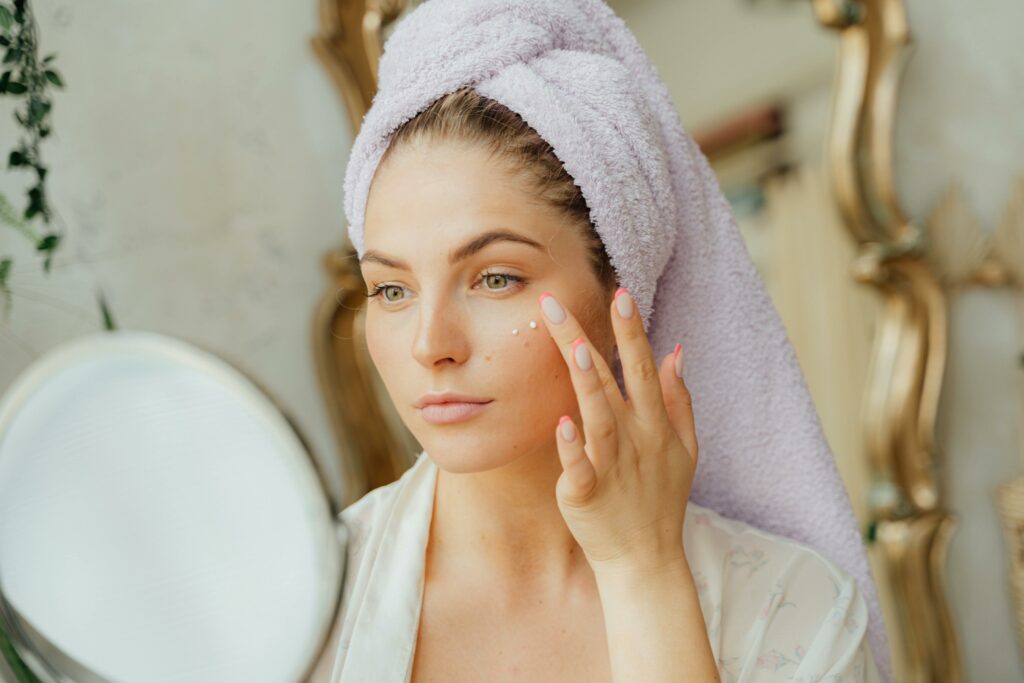
Image Credit: Freepik
Your marketing has to tap into that through identity, storytelling, and tone that feels human. That’s how you build loyalty. That’s how you build desire.
Consistency builds trust
In this space, your brand identity isn’t just your logo or typeface. It’s how your packaging feels, how your social captions sound, how staff speak to clients. It all matters, and it all has to line up.
When your brand shows up the same way, everywhere, over time? That’s how you become recognisable, reliable, and respected.
Consistency isn’t boring. It’s branding that actually works.
The experience matters more than speed
Luxury buyers don’t want fast. They want right.
Whether it’s a store, a pop-up, a delivery box, or a digital journey, the entire experience should feel curated, elevated, and worth slowing down for.
Luxury digital marketing should reflect that same pace: deliberate, thoughtful, and crafted for immersion.
If your campaign feels like it’s rushing the sale, it’s already lost the point.
Building a Luxury Marketing Strategy That Actually Works
In luxury, it’s not about how much you say, it’s about what you say, and who you’re saying it to. Strategy here needs to be focused, refined, and never rushed.
Step 1: Start with your brand DNA
Before you go near campaigns or content, your brand identity needs to be locked down. That means knowing exactly who you are, not just what you sell.
Ask:
- What is the origin story of the brand?
- What values will never change?
- What makes your aesthetic unmistakable?
- What does your brand never do?
These aren’t surface-level branding exercises. They shape everything from your pricing strategy to the type of events you host.
Step 2: Understand your audience
This step gets skipped way too often, or worse, it’s done with basic income brackets and assumptions. That doesn’t cut it in luxury.
You’re speaking to a niche audience with very specific tastes. One person might care about heritage. Another is looking for cultural relevance. Some buy for status, others for scarcity. Your job is to understand the emotional driver behind their buying behaviour.
Don’t just look at what they’re buying. Figure out why. That’s where relevance begins.
Step 3: Position for desire, not need
In luxury, positioning isn’t about what your product does; it’s about what it stands for. Your customers already assume it works. What they’re really buying into is the symbolism, the story, and the feeling it creates.
Strong positioning in this space needs to communicate status, taste, and identity, often without ever saying those words directly. This is where emotional triggers matter, but they have to be grounded in real context. The goal is to make the product feel like part of something bigger. That could mean:
- Belonging – Aligning with a cultural or aspirational group that the customer respects
- Individuality – Offering something rare or personal that helps them stand out
- Legacy – Tapping into heritage, timelessness, or craft passed through generations
- Cultural relevance – Being recognised in the right circles, publications, or social spaces
- Transformation – Making the buyer feel elevated, more confident, or more seen
- Values alignment – Connecting to sustainability, artistry, or ethics – when it’s authentic
- Ritual – Making ownership or usage feel personal and intentional (e.g. skincare routines, bespoke fittings)
What you’re really doing here is anchoring meaning to the product in a way that speaks to how the customer sees themselves, or how they want to be seen.
So positioning isn’t just messaging. It’s the emotional basis that drives every part of your strategy, from pricing and visuals to partnerships and media placements.
Step 4: Be selective with channels
You don’t need to be on every platform. In fact, trying to be everywhere dilutes exclusivity. Instead, think about where your audience expects you to be and where your brand feels most at home.
For some, that might mean a carefully curated Instagram presence and a high-end print placement. For others, it’s more about experiential events or long-form editorial. A luxury skincare brand might invest in private consultations; a luxury travel brand might focus on immersive video. What matters is alignment, not reach.
Step 5: Build in real exclusivity
If everything is available to everyone, nothing feels luxurious. That’s the truth.
Exclusivity isn’t just a tactic; it’s what keeps your brand desirable. But it can’t be fake. Today’s luxury audience is smart. They can spot forced scarcity or overhyped “limited editions” a mile off. So this part of your strategy needs to be intentional, consistent, and most importantly, believable.
You’re not trying to keep people out for the sake of it; you’re creating something rare, personal, and worth waiting for.
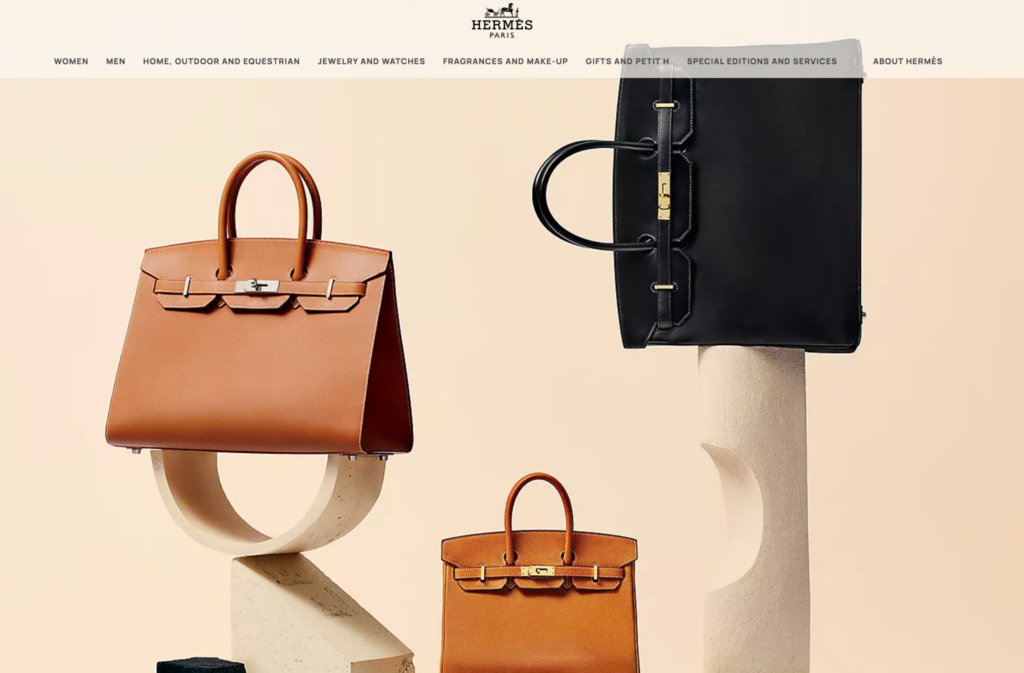
Image Credit: Hermes UK
Here’s how real exclusivity can show up in your brand strategy:
- Tight control over supply – Not just fewer units, but clear reasoning behind why
- Early access for VIPs or top-tier clients – Think loyalty-based, not influencer-first
- Private previews or invite-only launches – Whether physical or digital, it creates anticipation
- Personalised outreach – Direct messages, bespoke recommendations, or white-glove service
- Member-only product ranges or services – Create something that lives behind a locked door
- Geo- or culture-specific collections – Launch something only in Tokyo. Or Paris. Make it location-led.
- Limited-time availability – A tight window to access builds urgency without discounting
What matters most is that people feel like they’re part of something others can’t easily access, not because you’re gatekeeping, but because you’re crafting value in a way that’s deliberate and rare.
And exclusivity doesn’t always mean luxury pricing. Even younger or values-led luxury buyers respond to thoughtful access if it feels meaningful and aligned with your brand’s world.
Done well, exclusivity doesn’t turn people away. It draws the right people in and makes them want to stay. This is how Hermès Birkin bags develop multi-year waitlists and auction resale values that surpass retail. Or how certain Patek Philippe watches sell out before they’re even shown to the public. It’s why limited-production sneakers from brands like Dior can command double or triple their retail price in private sales.
True exclusivity creates a sense of urgency, fuels collectability, and builds cultural cachet, all while protecting the brand’s long-term value.
Step 6: Redefine Success
This part trips up a lot of marketers. In luxury, traditional KPIs like clicks and traffic often miss the point.
You’re playing a long game. Focus on indicators like:
- Retention of top-tier clients
- Organic visibility in high-value environments
- Brand associations (are you showing up in the right cultural spaces?)
- Perceived value and pricing power over time
Luxury isn’t about conversion speed. It’s about long-term equity and becoming a brand people aspire to buy into, even before they can.
Examples of Effective Digital Luxury Marketing
You’ve read the theory, now let’s see how it plays out when top brands put these ideas into action!
Ferrari – The Power of Strategic Silence
Ferrari is proof that in luxury, you don’t always have to be seen to be desired. The brand famously produces far fewer cars than there is demand for and is selective about who even gets the chance to buy one. Their limited production runs and tight distribution create waiting lists that stretch for years.
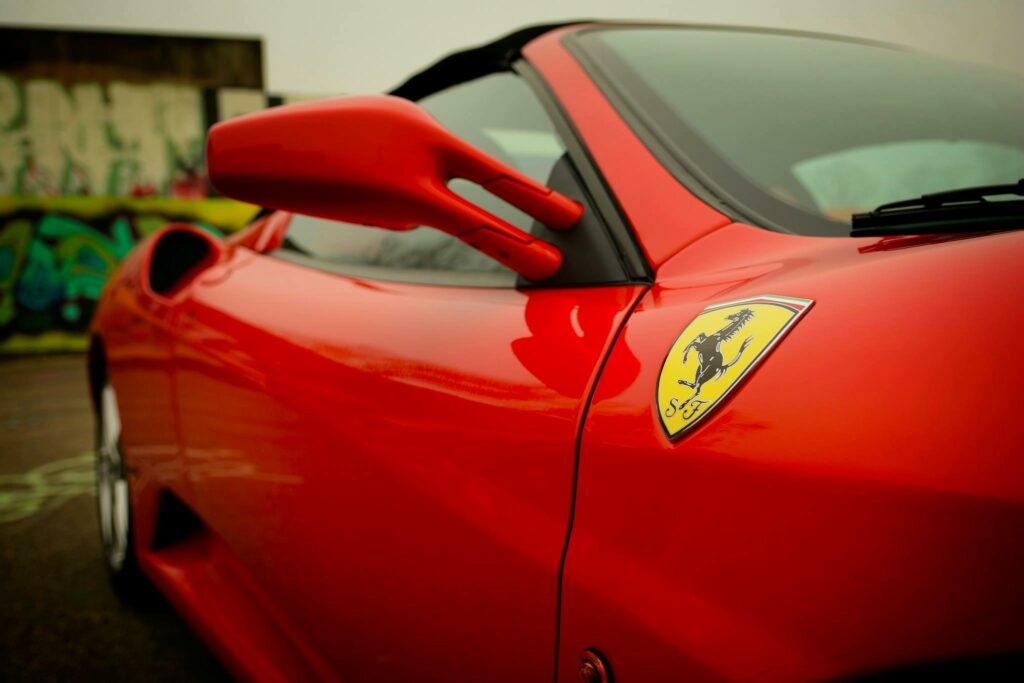
Image Credit: Freepik/Ferrari
No constant Instagram ads. No seasonal sales. No chasing awareness in mass channels. Instead, Ferrari focuses on controlled reveals, motorsport prestige, and a client experience that feels almost ceremonial. That restraint keeps their cars in high demand and ensures the resale market often outpaces retail prices, reinforcing the idea that ownership is a privilege, not just a purchase.
Takeaway: Scarcity, when genuine and consistent, can be more powerful than the biggest marketing budget.
Hermès – Turning Process into Prestige
At Hermès, the craftsmanship isn’t just part of the product; it is the product. Through its “Inside the Atelier” series and in-person events, the brand lets select customers see every stage of creation, from sourcing leathers to hand-stitching a Birkin.
By making the process visible, Hermès shifts the conversation from price to value. A €10,000 bag stops being “expensive” when you understand the hundreds of hours, specialist skills, and generational know-how behind it. It’s not about selling faster; it’s about making customers proud to wait.
Takeaway: Transparency, when tied to craftsmanship, elevates both perception and willingness to pay.
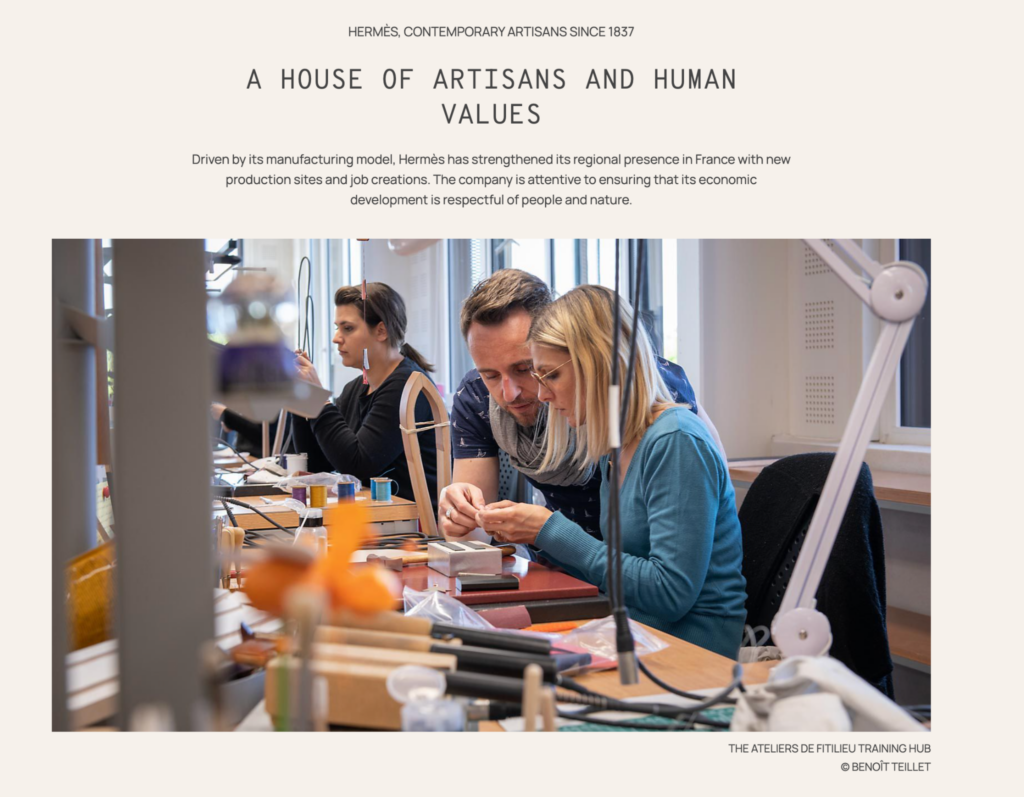
Image Credit: Hermes UK
Venyx – Crafting a Digital Home for Fine Jewellery
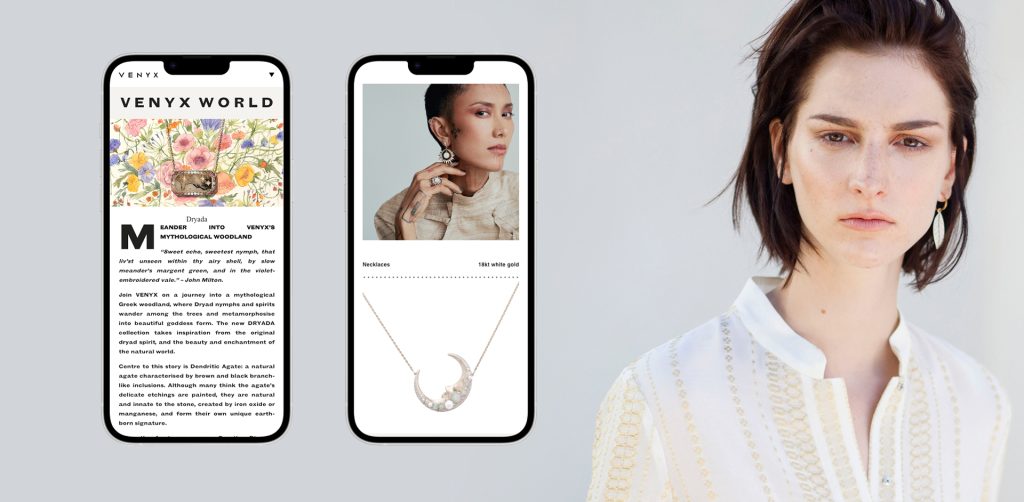
Image Credit: Venyx
When Appnova partnered with luxury jewellery house Venyx, the goal wasn’t just to redesign a website; it was to translate the feeling of browsing a private showroom into a digital experience.
- A pared-back homepage with generous white space so each piece had room to breathe
- Product pages that blended catalogue precision with editorial storytelling, highlighting artistry alongside technical details
- Mobile checkout streamlined to just two taps, so buying didn’t break the immersion
The result? Longer browsing times, increased exploration of collections, and a sharper expression of Venyx’s brand DNA online. It showed that in luxury e‑commerce, the environment is as important as the product.
Takeaway: Your online presence should feel like part of the brand world, not a bolt-on sales channel.
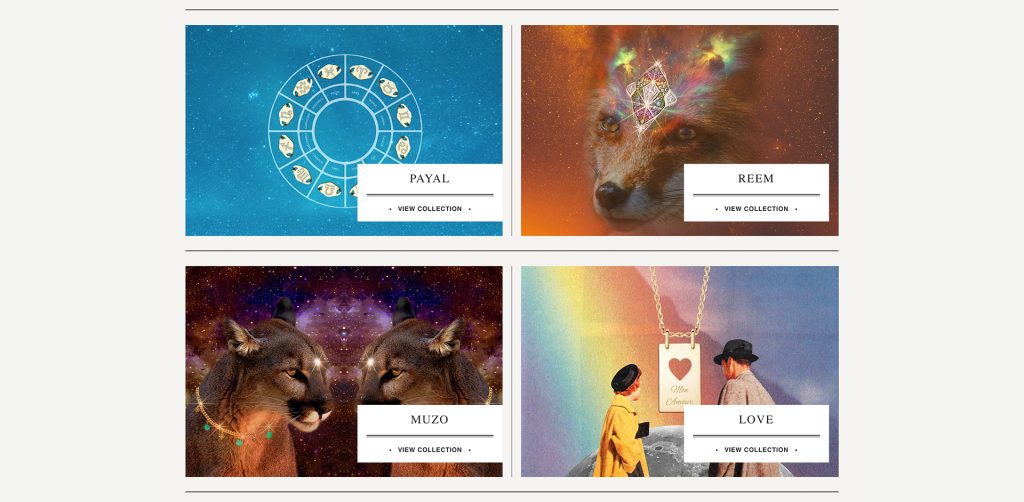
Image Credit: Venyx
Chanel – Mood Over Merchandise
In recent campaigns, Chanel has leaned into cinematic storytelling. The brand’s short films often focus on mood, heritage, and texture rather than directly showcasing products. There’s no “Shop now” call to action, just an invitation to step into their world.
This approach builds emotional equity. You might not buy today, but you remember the brand’s tone, visuals, and spirit. It plants a seed that grows into desire over time.
Takeaway: In luxury, it’s often more valuable to sell the dream first. The product comes later.
Louis Vuitton x Yayoi Kusama – When Art Meets Luxury
In 2023, Louis Vuitton’s collaboration with avant-garde artist Yayoi Kusama wasn’t limited to handbags. It became an immersive cultural event. Boutiques were transformed into art installations, AR filters let users “try” polka-dot designs at home, and the campaign blurred the lines between fashion, technology, and fine art.
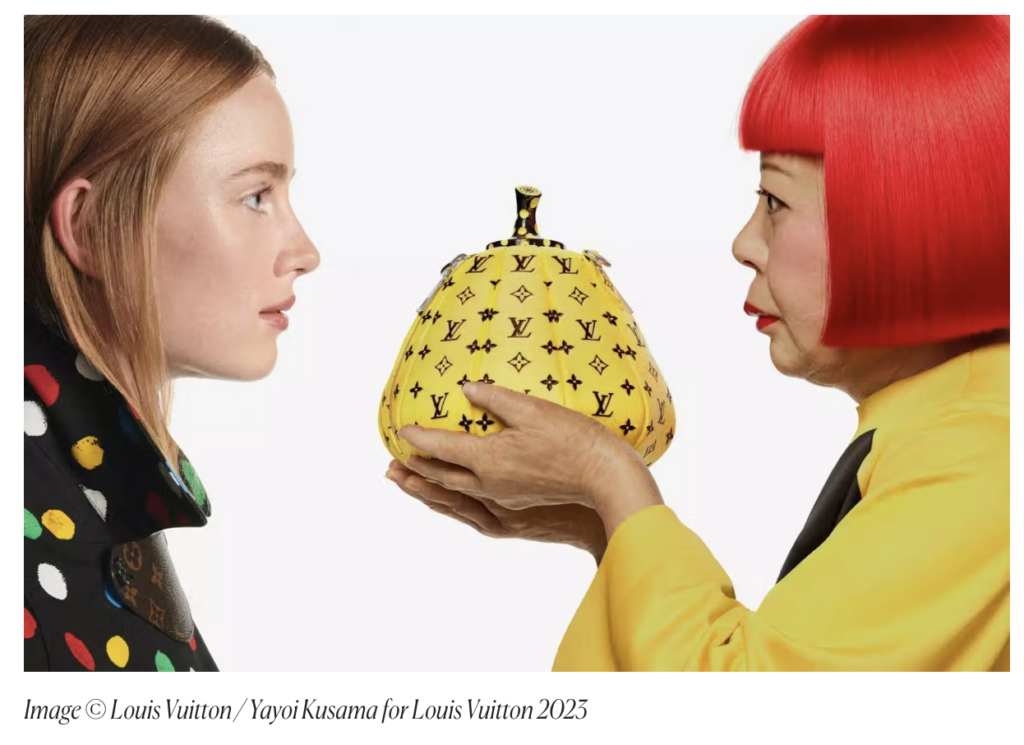
Image Credit: Louis Vuitton/Yayoi Kusama for Louis Vuitton 2023
This wasn’t just a product drop; it was a moment in culture that reinforced LV’s legacy while attracting a younger, digitally engaged audience.
Takeaway: Partnerships work best when the collaborator’s identity enhances your brand’s, not just when it brings temporary hype.
Why Luxury Marketing Isn’t as Easy as It Looks
On the surface, luxury brands seem to have it made. High margins, loyal clients, timeless appeal…
But the reality? This space is one of the toughest to market in because every move has to walk a fine line between desire and accessibility, tradition and relevance.
Here are the challenges luxury marketers run into and how to work through them.
1. Balancing Exclusivity with Growth
You want to scale, but you don’t want to look like you’re trying to. That tension is constant.
Go too broad, and you risk diluting the brand. Stay too exclusive, and growth stalls. The fix is selective expansion, whether it’s regional, product-based, or experiential, without opening the floodgates.
Think curated launches, tiered access, or private member communities rather than mass exposure.
Tip: Luxury resale and archive collections can also drive new customer interest without changing your core positioning.
2. Staying Relevant Without Chasing Trends
Luxury shouldn’t feel outdated. But chasing TikTok trends? That’s a fast way to cheapen perception.
The key is cultural alignment, not trend-chasing. Tap into art, architecture, design, or emerging creators your audience respects.
Louis Vuitton didn’t just pick Yayoi Kusama randomly; they aligned with an artist whose legacy matched their own.
Fix: Build partnerships that feel earned, not opportunistic. Your audience can smell the difference.
3. Digital Without Losing the Luxury Feel
This one’s huge. A bad website or clunky online store kills the brand experience instantly. But slick doesn’t always mean luxury, and speed alone doesn’t mean success.
Luxury digital experiences should feel slow, considered, and immersive. Not bloated, just intentional. The goal isn’t to mimic fast fashion UX, it’s to create a space where the user slows down, explores, and feels something.
For Venyx, we intentionally slowed image transitions and layered storytelling into product pages. It increased time-on-site and made the digital experience feel more aligned with the brand’s price point.
4. Navigating Global vs. Local Expectations
A luxury customer in Shanghai doesn’t behave the same as one in Paris or Dubai. Expectations, aesthetic preferences, and even service norms can vary wildly, but you can’t create a separate brand for every market.
The answer? Create a global brand core, then localise the experience. This might mean regional content, tailored store experiences, or culture-specific influencers, all without diluting your visual or tonal identity.
5. Measuring What Actually Matters
Luxury campaigns rarely go viral, and that’s fine. But traditional KPIs (clicks, likes, conversions) often miss what matters, such as brand heat, desirability, and perception among your highest-value clients.
Start tracking what your investors don’t always ask for:
- Client retention at the top tier
- Share of voice in the right spaces (not just volume)
- Engagement from key cultural communities
- Willingness to pay full price
If brand value is your biggest asset, track how it’s growing, not just how many people are clicking “add to bag”.
What It All Comes Down To
Luxury marketing is about precision. Every decision, from how you launch a product to where you place a line of copy, carries weight. The best luxury brands don’t just market things. They build worlds people want to belong to. They understand their audience deeply, move slowly when it counts, and never chase short-term wins at the cost of long-term value.
If you’re working in this space, the bar is higher, but so is the reward. You’re not trying to reach everyone. You’re creating the kind of brand that the right people remember, talk about, and stay loyal to for years.
Do you want help crafting a luxury experience that stands the test of time? Whether it’s branding, digital, or ecommerce strategy, we work with luxury brands to get the balance right. Contact Appnova today and speak with one of our friendly team members!
FAQs
What are the 4 E’s of luxury marketing?
The 4 E’s of luxury marketing are Experience, Exclusivity, Emotion, and Engagement. These represent the core focus areas for any luxury brand.
Rather than selling a product, luxury marketing is about creating a memorable experience, building emotional connection, offering exclusivity, and engaging with customers in a more personal, refined way.
How do you create a luxury brand image?
A luxury brand image is built through consistency, attention to detail, and a clear sense of identity. It’s not just about visuals, it’s about how the brand behaves across every touchpoint.
From the tone of voice to packaging design to in-store service, everything should feel elevated, intentional, and never rushed. Storytelling and restraint are key to building trust and long-term desirability.
What channels are most effective for luxury brand marketing in 2025?
In 2025, the most effective channels for luxury marketing are those that allow for control and refinement.
This includes high-end editorial placements, curated social media (like Instagram and TikTok, used carefully), private client communications, immersive website experiences, and exclusive in-person events.
What matters most is not how many people you reach, but how aligned those channels are with your brand and audience.
What KPIs should luxury marketers track?
Luxury marketers should track metrics that reflect long-term brand strength, not just short-term wins.
Useful KPIs include repeat customer rate, time spent engaging with content, full-price sales, organic brand mentions in key media, and qualitative feedback from top-tier clients.
These indicators help show whether the brand is building real value and loyalty over time.
Subscribe To Us
Our Services
Categories
Subscribe To Us
Contributors
Categories

This website uses cookies so that we can provide you with the best user experience possible. Cookie information is stored in your browser and performs functions such as recognising you when you return to our website and helping our team to understand which sections of the website you find most interesting and useful. Third party cookies such as Google Analytics is also used on this site to provide analytics in order to better understand the user engagement on our site.
You can adjust all of your cookie settings by navigating the tabs on the left hand side.
Strictly Necessary Cookie should be enabled at all times so that we can save your preferences for cookie settings.
If you disable this cookie, we will not be able to save your preferences. This means that every time you visit this website you will need to enable or disable cookies again.







0.Comments